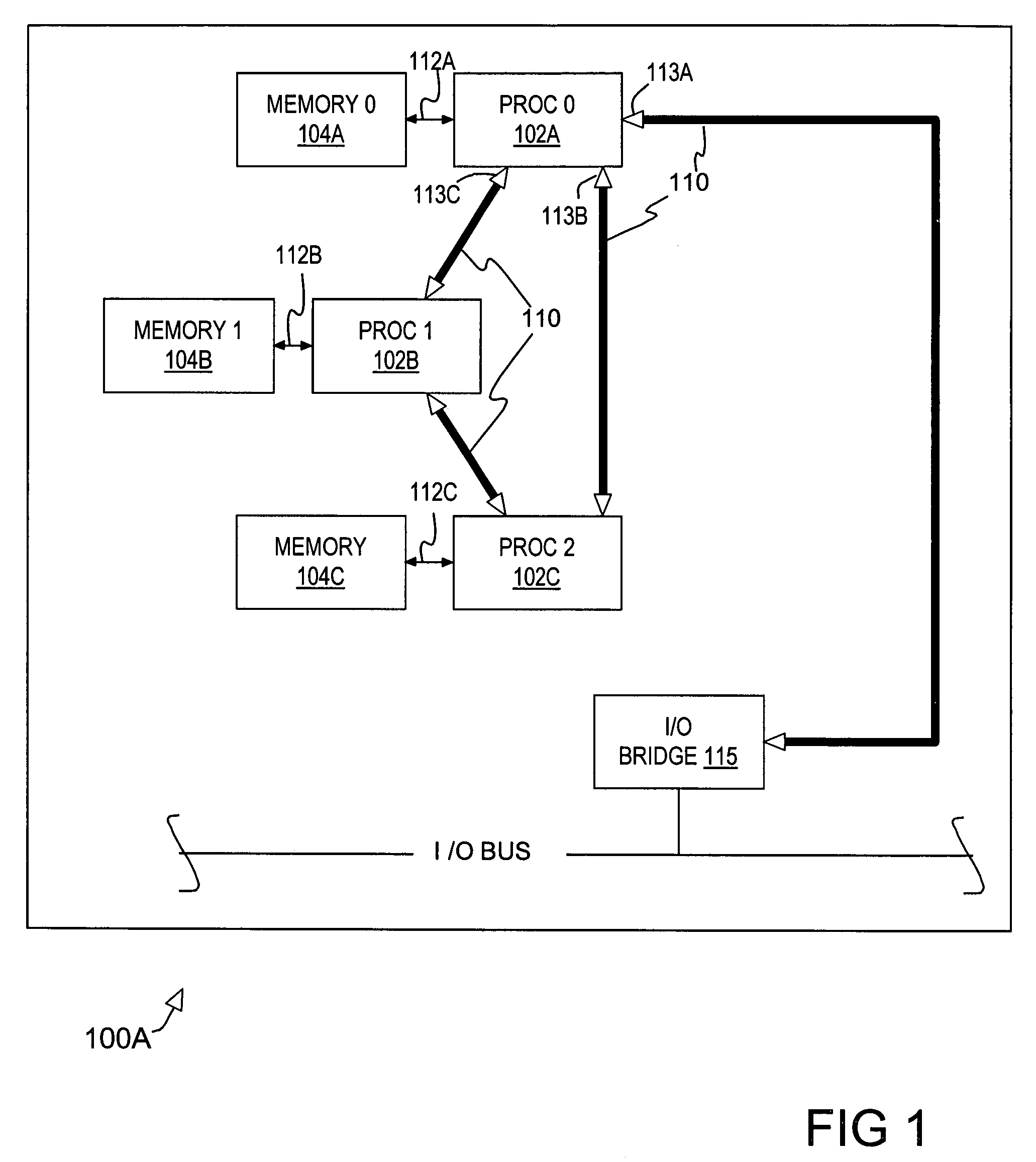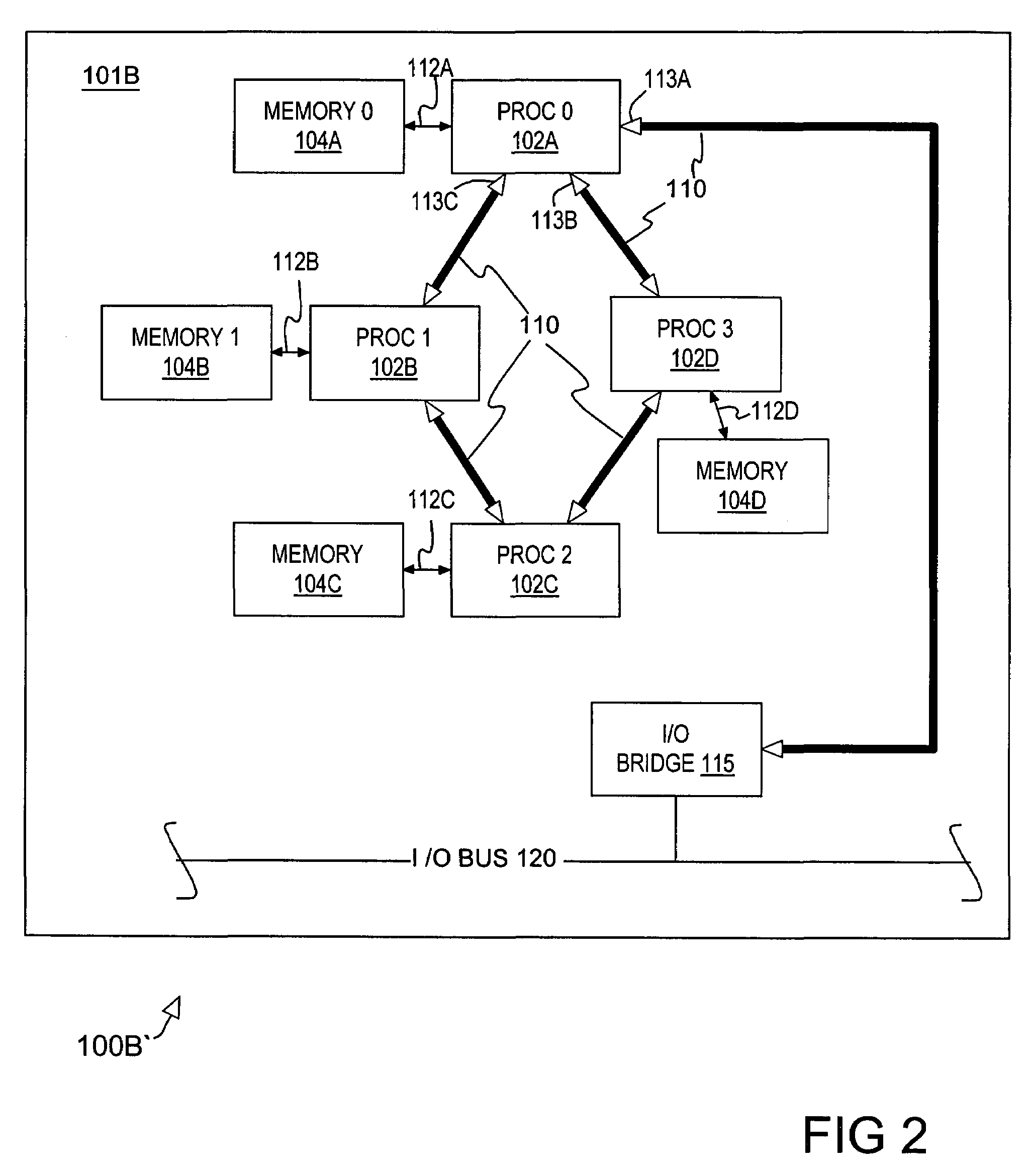Pass through circuit for reduced memory latency in a multiprocessor system
a multi-processor system and memory latency technology, applied in the field of data processing systems, can solve the problems of the number of point-to-point links that any processor can accommodate, and the bottleneck typically limiting so as to reduce the overall latency, improve the symmetry, and reduce the number of processors.
- Summary
- Abstract
- Description
- Claims
- Application Information
AI Technical Summary
Benefits of technology
Problems solved by technology
Method used
Image
Examples
Embodiment Construction
[0015]Generally speaking, the invention includes a mechanism for optimizing performance of a multiprocessor system under circumstances when memory asymmetry associated with the system results in degraded performance. The mechanism reduces asymmetry by replacing one (or more) processors with a bypass or pass-through device. Using the pass-through mechanism, the reduced number of processors in the system enables all of the remaining processors to connect to each other directly using the interconnect links. The reduction in processor count improves symmetry and reduces overall latency thereby potentially improving performance of certain applications despite having fewer processors.
[0016]Referring now to the drawings, FIG. 1 illustrates selected elements of a multiprocessor system 100A exhibiting desirable symmetry. System 100A is illustrated to provide a point of comparison for the subsequent discussion of a similar system having additional processors. System 100A includes three genera...
PUM
 Login to View More
Login to View More Abstract
Description
Claims
Application Information
 Login to View More
Login to View More - R&D
- Intellectual Property
- Life Sciences
- Materials
- Tech Scout
- Unparalleled Data Quality
- Higher Quality Content
- 60% Fewer Hallucinations
Browse by: Latest US Patents, China's latest patents, Technical Efficacy Thesaurus, Application Domain, Technology Topic, Popular Technical Reports.
© 2025 PatSnap. All rights reserved.Legal|Privacy policy|Modern Slavery Act Transparency Statement|Sitemap|About US| Contact US: help@patsnap.com



